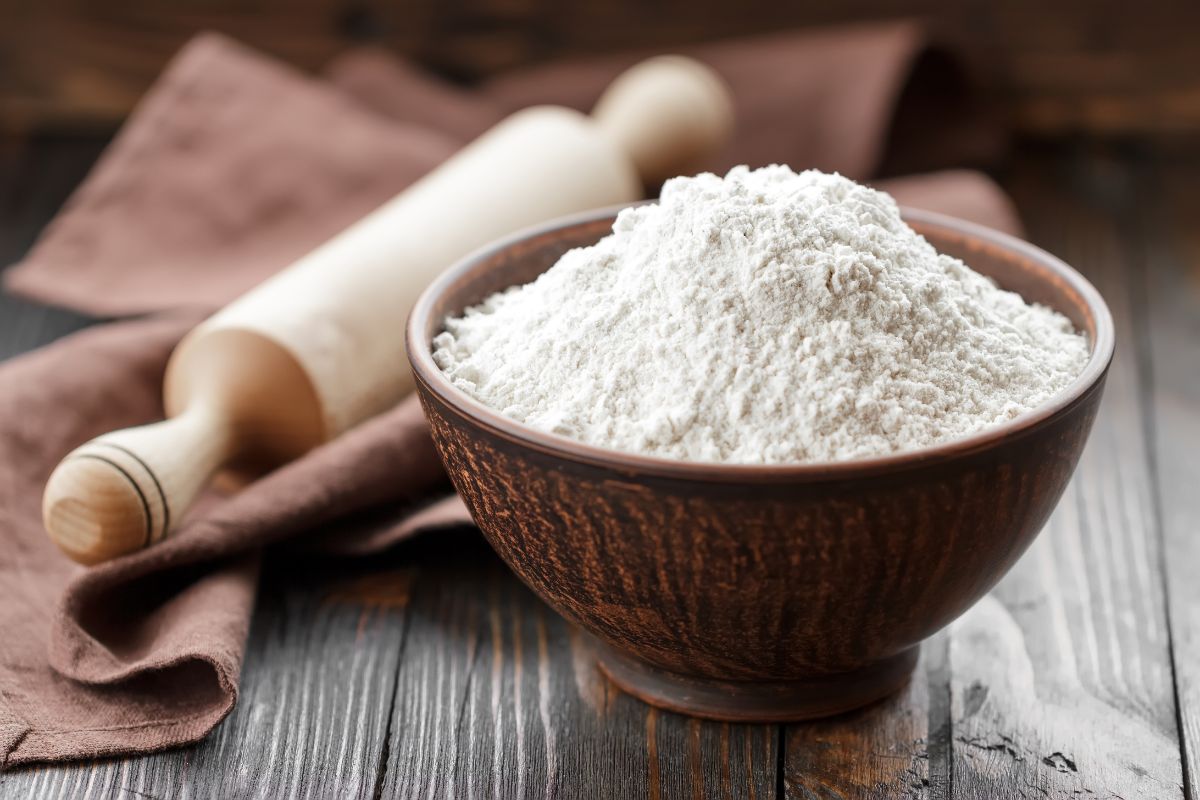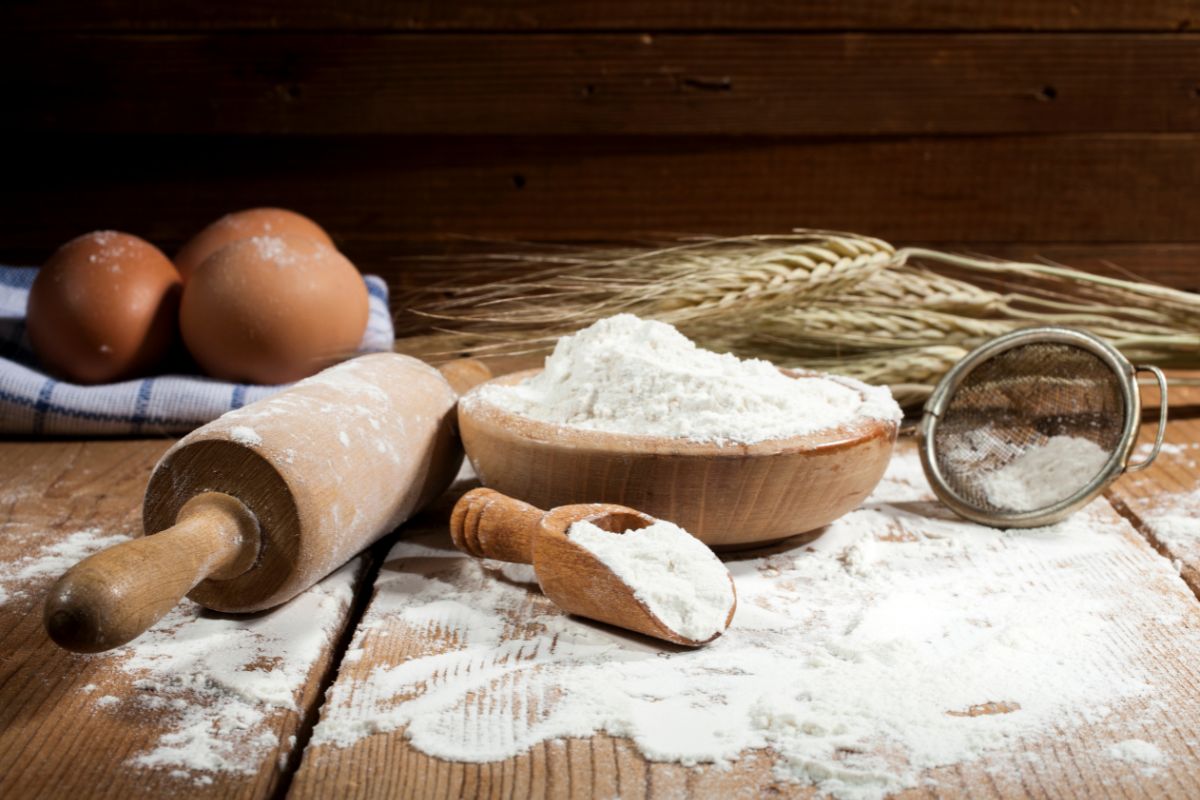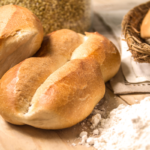As far back as history books go, humans have been using flour every day to make their bread. Flour comes from ground grains, and men and women have found lots of different ways to grind this flour over the years.

If you’re interested in the history of white flour, you’ve come to the right place! This article has compiled all of the information out there on the history of white flour, including the changes in production to its links with status. Let’s dive in!
The Beginning Of White Flour
White flour has always been featured in history books as part of the daily routine of making bread. Over the years, different cultures have developed their own methods for grinding flour.
Over 6,500 years ago, the oldest oven was discovered in Croatia. It is thought that, even before wheat was being cultivated, we were collecting the wheat grains and soaking them in water to create a paste.
This was then poured into rocks that were heated by the sun to cook the food until it became solid. This is one of the earliest versions of bread, and it dates back to around 9600 BCE.
It was the Ancient Egyptians who developed the idea of baking. They began grinding the wheat using stone and mortar. Over time, this developed into animal-powered milling methods, and the mills then became powered by water and wind.
As they developed their baking skills, they would make bread that they sweetened with honey and the wealthy would sweeten their bread with fruit juice (for more fruit bread recipes, read here).
The Ancient Egyptians were also the first to use wild yeast to leaven their bread and to make beer.
White Flour And Status
Stoneground flour is the name for flour that is made through stone and mortar. All of the parts of the wheat kernel, including the bran, endosperm, and germ are retained throughout this process.
These flours are coarser and have much less rise when they are used in baking as they retain the most nutritious parts of the wheat grain, which also happen to be the bulkiest.
Around 3000 B.C.E., the Egyptians started to seek a finer texture for their flour. To do this, they used hand sieves to sift the flour. Sifting the flour helped them to separate the finer grains from the coarse ones. This is referred to as the first version of white flour.
As hand sifting this flour was time-consuming, only royalty could afford it. For this reason, it was known as being for the rich and high status.
This has occurred across many cultures over the years, as they all developed their own processes for making finer flour.
With the production of finer flour, you will have the opportunity to develop lighter and better-baked goods, but these could only be produced by those who could afford them.
So, because of this, sifted flour became a symbol of status. Those who could afford it would have finer sifted flour, and those who couldn’t afford it would purchase the coarser wheat flour that was stone ground.
The poorest people would have to opt for even cheaper flour such as rye and barley.
Introduction Of The Steel Roller Process
Between 1870 and 1890, milling flour using steel rollers developed into the most popular method of milling flour.
This process meant that mass production of flour became possible, as the flour could be produced very quickly. It also enabled the millers to separate the wheat kernels to make the flour fine.
This meant that the flour was produced very quickly, and it produced fine white flour at an affordable rate.
Over time, the stone roller mills were taken over by the steel roller process. This process took over because all other processes couldn’t compete with the speed of production and affordability of the flour.
Problems With Switching To Steel Rolling

The new method of milling flour allowed the flour to be produced on a large scale, and this meant that this flour was affordable for most people. While this was good in some ways, a few problems came alongside switching to steel rolling mills.
Loss Of Vitamins And Minerals
Common households were previously consuming stone ground flour, which still contained the bran and germ of the wheat kernel. This means that all of the vitamins and minerals were present in this flour, providing some nutrients for those consuming it.
However, when production switched to steel roller mills, these nutritious parts of the grain were left out. Without these vitamins and minerals, the flour had no nutritional value left in it!
This was a big problem that lots of households faced, especially the poorer households. Flour had previously been a big part of the nutritional value that they consumed each day, and this value had been removed from the product.
On average, the American household was getting only one-third the amount of nutritional value than prior to the change in production.
Because of this, poorer citizens started to develop illnesses related to deficiencies. For instance, they started to experience anemia and other deficiencies.
As this was becoming more and more of a problem, Benjamin R Jacobs began to develop ideas about how to fix the loss of vital nutrients.
He knew that the industry would never return to its original practices, so he instead advocated for enrichment. This is the process where you add some of the lost nutrients back into the flour after processing.
In 1941, this became mandatory. They added iron, thiamin, and riboflavin to the white flour. This eradicated the deficiency problems as it meant that the poorer people were consuming these important nutrients again.
White Flour Today
Today, it is illegal to sell white flour that has not been enriched in most countries. While this doesn’t provide as many nutrients as the original process, it has helped to prevent large-scale deficiencies in the poor.
Now, in the US, white flour is still the most popular flour for home bakers. It produces light products that rise well and it is commonly used in cakes, biscuits, and pastries.
When it is used in cakes, it is often combined with a rising agent which will ensure that the cake rises properly. It is also commonly used in soda bread.
As flour started to be produced on a mass scale, so did baking products. This meant that cakes and bread could be made on a big scale, and sold in stores.
White flour contains about 75% of the wheat grain. It is artificially whitened, but you are able to buy a variety of this flour that is unbleached.
Whole grain flours have become more popular in recent years because these flours are less processed and better for you than white flour. Having said this, white flour is still extremely popular, and it is a staple in everyone’s household to this day.
Flour is arguably one of the longest-lasting products that you will find in everyone’s kitchen, as it has been used as far back as the history books go!
Final Thoughts
So, there you have it! A detailed history of white flour over the years. As far back as history books go, people have been using flour in their baking, and that is no different today.
However, in that time, the process of making flour changed, as has the culture surrounding it. You should now know everything there is to know about the history of flour!
- How To Reheat A Cheesesteak - November 5, 2023
- What Are Three Must Have Kitchen Knives? - September 22, 2023
- How To Protect Edges Of Pie Crust - June 15, 2023








